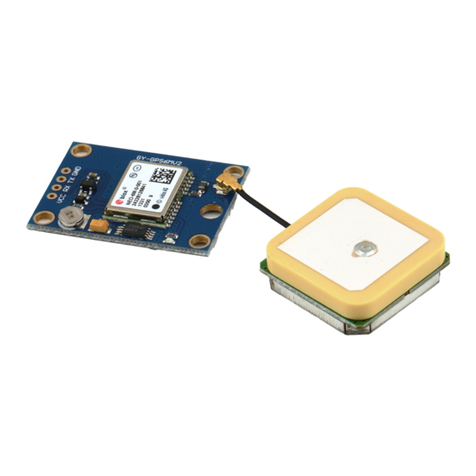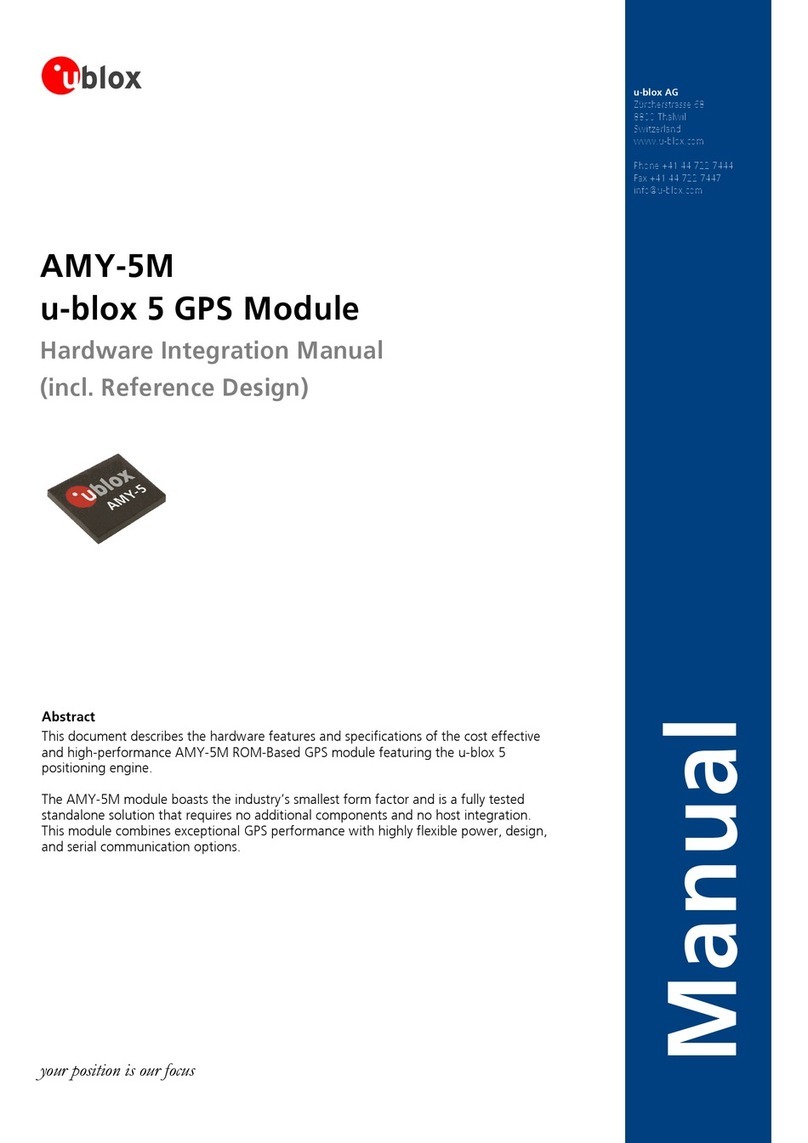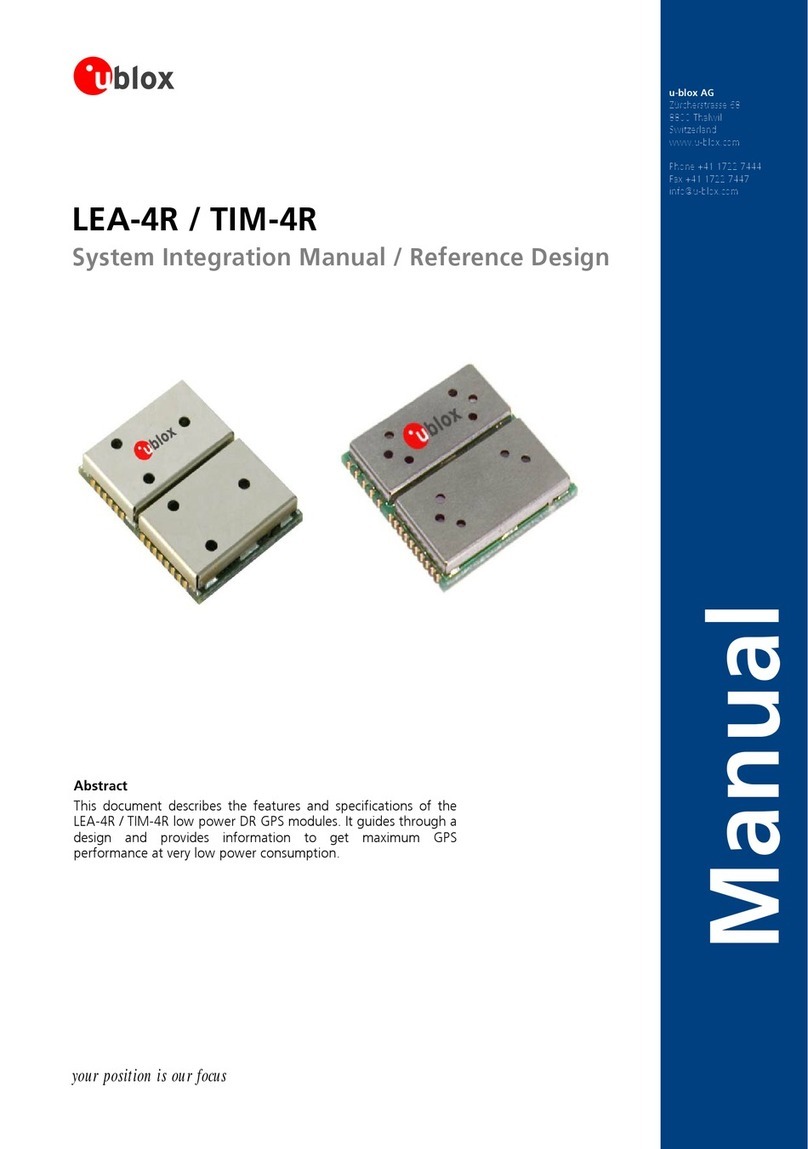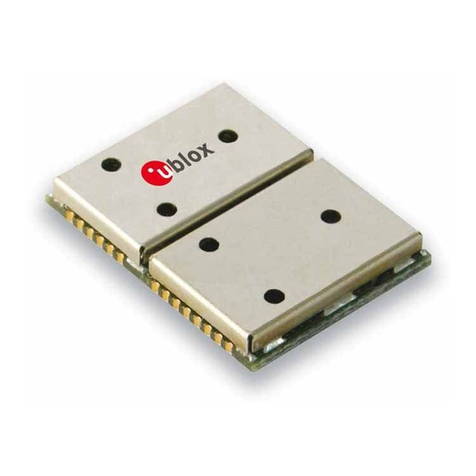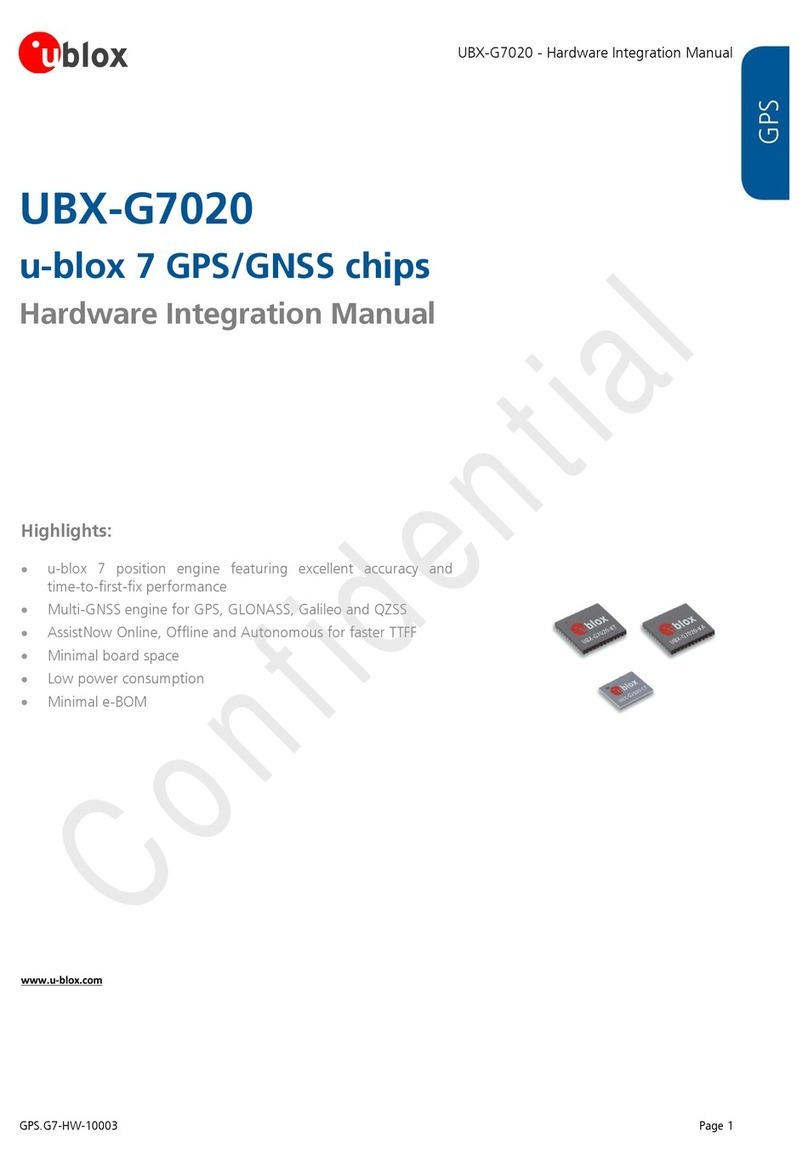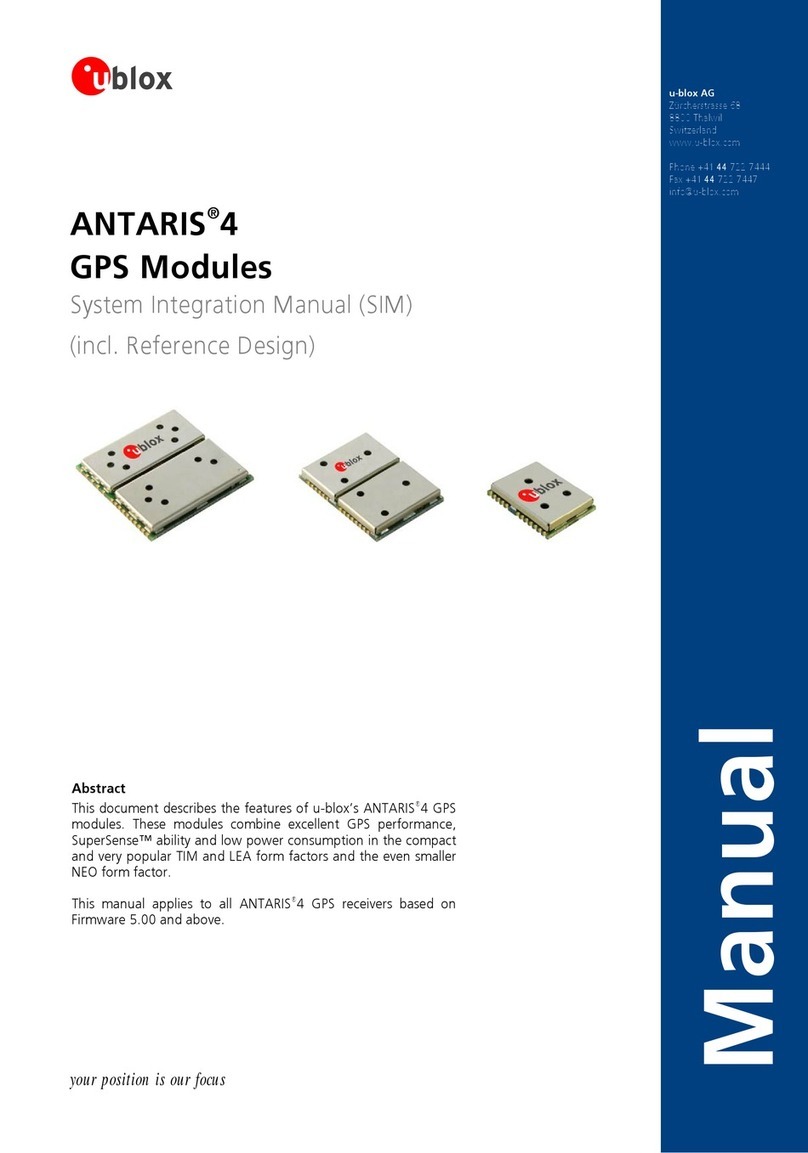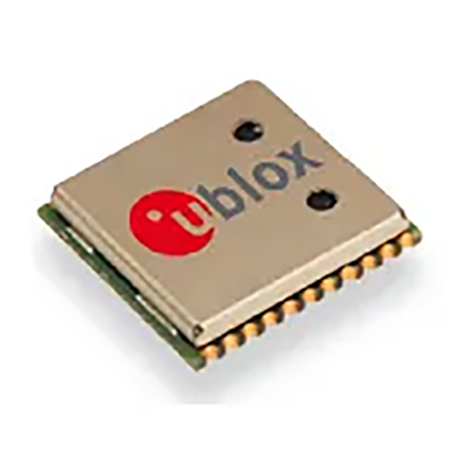AMY-6M - Data Sheet
UBX-13004381 - R07 Production Information Contents
Page 3 of 28
Contents
Contents..............................................................................................................................3
1Functional description..................................................................................................5
1.1 Overview .............................................................................................................................................. 5
1.2 Product features ................................................................................................................................... 5
1.3 GPS performance.................................................................................................................................. 6
1.4 Block diagram....................................................................................................................................... 7
1.5 Assisted GPS (A-GPS)............................................................................................................................ 7
1.6 AssistNow™ Autonomous.................................................................................................................... 7
1.7 GPS Solution for Android...................................................................................................................... 7
1.8 RTC ...................................................................................................................................................... 7
1.9 Protocols and interfaces........................................................................................................................ 8
1.9.1 UART............................................................................................................................................. 8
1.9.2 USB ............................................................................................................................................... 8
1.9.3 Serial Peripheral Interface (SPI)....................................................................................................... 8
1.9.4 Display Data Channel (DDC) .......................................................................................................... 8
1.10 Antenna............................................................................................................................................ 8
1.11 Power management.......................................................................................................................... 9
1.11.1 Operating modes .......................................................................................................................... 9
1.11.2 Eco mode ...................................................................................................................................... 9
1.11.3 Base-band I/O supply voltage (VDD_IO) ......................................................................................... 9
1.11.4 External DC/DC converter control.................................................................................................. 9
1.11.5 Dual Power Supply ...................................................................................................................... 10
1.12 Configuration ................................................................................................................................. 10
1.12.1 Configuration Pins....................................................................................................................... 10
2Pin Definition..............................................................................................................12
2.1 Pin assignment ................................................................................................................................... 12
3Electrical specifications ..............................................................................................14
3.1 Absolute maximum ratings ................................................................................................................. 14
3.2 Operating Conditions ......................................................................................................................... 15
3.2.1 DC Electrical Characteristic (internally generated) ........................................................................ 15
3.2.2 RF AC Parameters........................................................................................................................ 16
3.2.3 BB AC parameters ....................................................................................................................... 16
3.2.4 Power consumption .................................................................................................................... 16
3.3 Indicative power requirements............................................................................................................ 17
3.4 SPI timing diagrams ............................................................................................................................ 17
3.4.1 Timing recommendations ............................................................................................................ 18
4Mechanical specifications ..........................................................................................19
4.1 AMY-6M-0-001.................................................................................................................................. 19
